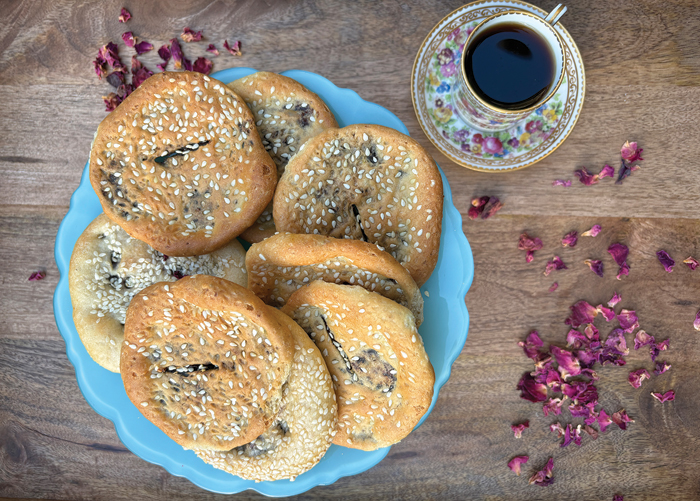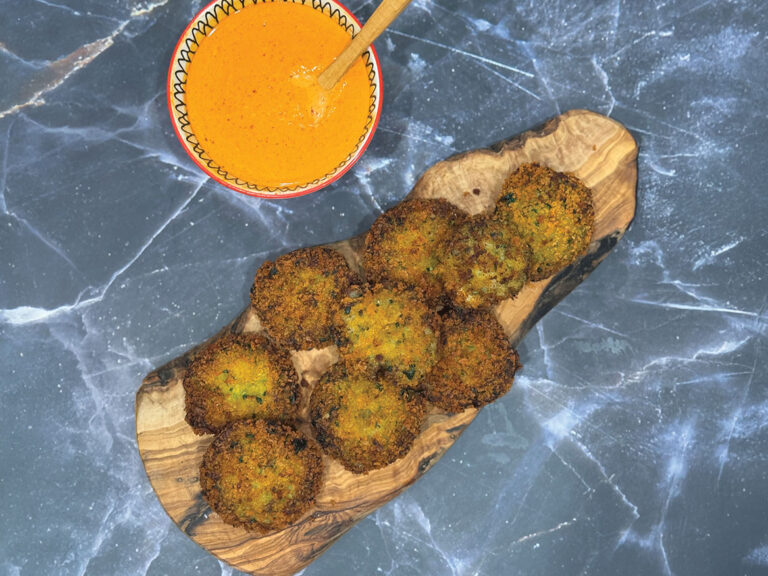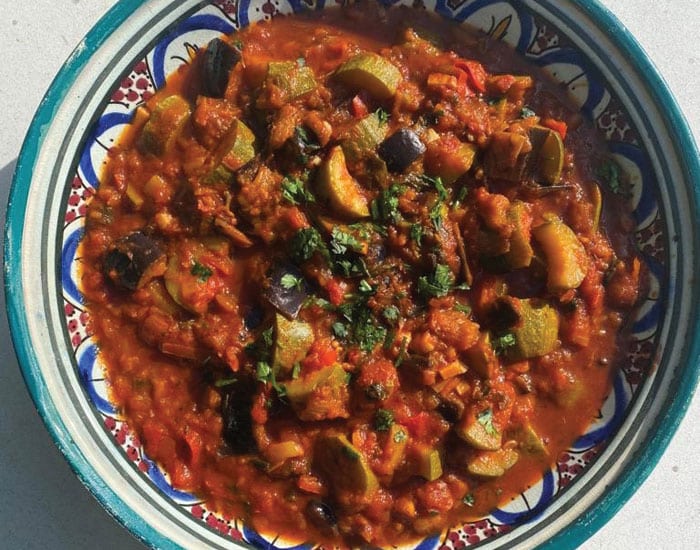Homemade Hummus: The Real Deal
We are here to highly encourage you to try to make homemade hummus. It’s quick, it’s easy, it’s cheap, it’s eco-friendly and it’s super nutritious.

When we asked our fathers if hummus was served in their homes in Morocco and Iraq, they both had the same answer. A resounding no.
Papi, Rachel’s dad, told her that in Morocco, only the poor people ate hummus.
My Aba reminisced about his youth in Baghdad and the very tasty boiled garbanzo beans that he would buy from the Arab street vendors on his way home from school. It cost a mere 5 fils for a paper cone cup filled with soft, creamy, salty beans.
If you’ve ever been to Israel, you know that the hummus eating begins on the plane. El Al serves a package of hummus for breakfast, lunch and dinner. You get kind of sick of it. But then you arrive in Israel and get a taste of the real deal. Fresh homemade hummus doesn’t compare. Eating hummus, known as “l’nagev hummus,” is a very popular activity in Israel. It is ubiquitous in Israeli breakfasts, falafel and sabich. A plate of hummus garnished with tahini, olive oil, paprika and fresh parsley is an essential part of the “shipudiya” (grilled skewer) meal. As is popular in all the Levantine countries, Israel boasts many “hummusiyas,” restaurants devoted solely to hummus. You’ll get the most incredible fresh baked thick, doughy, chewy laffa and pita and sides like hard boiled “brown” eggs, pickles, fresh parsley, cucumbers, eggplant and mushrooms. The best is reputed to be in Abu Ghosh, an Arab village outside Jerusalem.
In 2015, the Sephardic Educational Center premiered Oren Rosenfeld’s documentary “Hummus the Movie.” The film shows the commonality between the Jews, Moslems and Christians with three stories related to hummus. The Jew is a ba’al teshuva who has become a Breslover Chassid and sells hummus at a gas station in Yokneam. Suheila is a Moslem who runs a hummus restaurant in Acre and is renowned for her charity. The Christian is a young man torn between the thriving hummus business in Ramla his family has run for three generations and his girlfriend, who has moved to Berlin. It makes you hungry for hummus. Mickey Fine celebrated the premiere by sponsoring a Hummus competition at the Beverly Hills Farmers Market. Rachel’s preserved lemon hummus was runner up to our good friend and major foodie Rose Kemps, who won with her roasted pepper hummus.
Nowadays, our families very much eat hummus. We serve it every Shabbat with our Mezze—finely chopped Israeli salad, matbucha, grilled eggplant, tahini and other dips to be eaten with challah. We’re not the only ones. Hummus has become big business in the United States, with packaged hummus available pretty much everywhere.
ONE OF THE THINGS THAT MAKES THE HOMEMADE VERSION OF THE DIP SO HEALTHY (AND MUCH TASTIER) IS OLIVE OIL.
But we are here to highly encourage you to try to make homemade hummus. It’s quick, it’s easy, it’s cheap, it’s eco-friendly and it’s super nutritious. One of the things that makes the homemade version of the dip so healthy (and much tastier) is olive oil. Unfortunately, those prepackaged varieties usually contain less healthy soybean oil or canola oil, even the organic ones.
The traditional hummus recipe includes boiled garbanzo beans, tahini, lemon juice, garlic and olive oil. Its creamy and filled with all kinds of umami flavor. It’s a plant-based protein that’s full of fiber, iron, minerals and B vitamins. Best of all, this vegan treat is only 30 calories per tablespoon.
We’ve gone the route of soaking the beans, but in all honesty we’d rather save some time, so we use organic canned garbanzos. Good quality tahini and extra virgin olive oil, fresh garlic and lemon juice up the flavor. And if you make enough, the hummus lasts about a week in the refrigerator, perfect as a quick snack with veggies or a spread in a sandwich.
B’te’avon! Enjoy!
Super-Duper Easy Hummus
4 cups water
1 teaspoon baking soda
1 29oz can of organic garbanzo beans,
washed and drained
1 garlic clove
1/3 cup tahini
1 lemon, juiced
1 teaspoon kosher salt
3 tablespoons extra virgin olive oil
Over a medium flame, heat water, baking soda and garbanzo beans in a small pot.
Boil for 30 minutes, until beans are very tender.
Drain water and place chickpeas in a food processor or blender.
Add the garlic, tahini, lemon juice, salt and
olive oil .
Blend everything until very smooth.
If needed, add lemon juice or salt to taste.
Garnish with a drizzle of olive oil, za’atar, sumac, paprika, herbs, and of course tahini!
Rachel Sheff and Sharon Gomperts have been friends since high school. They love cooking and sharing recipes. They have collaborated on Sephardic Educational Center projects and community cooking classes. Find recipe video clips and recipes on Instagram SEPHARDIC SPICE GIRLS and Facebook SEPHARDIC SPICE SEC FOOD.








